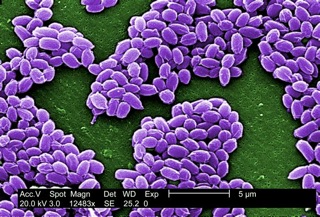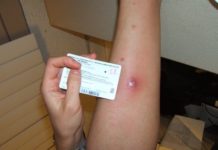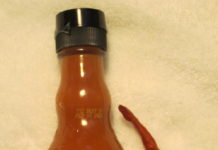In 2001, anthrax sent through the U.S. Postal Service infected 22 people; 5 of whom died. People feared that they were going to be attacked by anthrax because it could be used as a biological weapon. Can anthrax really be used as a biological weapon?
Today at least 13 countries have biological weapon programs, according to a 2002 article in the Journal of the American Medical Association. Most experts agree that it is difficult to make lethal anthrax into an aerosol form. Nevertheless, they worry that terrorists are trying to make anthrax spores into aerosols that can be sprayed around to kill a lot of people. An aerosol form is odorless and invisible and would be able to travel many kilometers. Moreover, experts warn that wealthy countries may be able to bioengineer anthrax into deadlier forms.
Anthrax is a Bacillus anthracis, a bacterium that forms spores. According to the Centers for Disease Control and Prevention (CDC), there are three different types of anthrax.
Cutaneous anthrax is caused by a small spore that develops into blisters. The blister develops on the skin with a black area in the center. They are sore, but do not harm in your body. It is the least deadly, according to CDC.
Gastrointestinal anthrax causes problems of nausea, loss of appetite, bloody diarrhea, and fever, followed by bad stomach pain, says CDC.
The CDC reports that the deadliest form is Inhalation anthrax. It affects the lungs and causes breathing problems. At least half of inhalation anthrax cases end in death. In the 2001 attack, the five people who died suffered had inhalation anthrax.
Anthrax can be treated with antibiotics, including penicillin, doxycycline, and ciprofloxacin. Inhalation anthrax takes up to 60 days to be treated because the spores take that long to grow. Anthrax is not contagious so it does not spread from person to person.
The United States government has been vaccinating against anthrax for the military serving in high terrorists areas. “We’ve vaccinated millions of soldiers; we have to know if our vaccine would be efficient against [anthrax],” says Raymond Zilinskas, a former US bioweapon inspector in Iraq told USA Today in 2002.
According to the CDC, inhalation anthrax poses the greatest possible threat to public health, it may spread across a large area and the public needs to be aware of, and needs a great deal of planning to protect public’s health. The CDC has developed plans to respond to an attack of anthrax. The CDC is training and equipping emergency response teams, and is working with health departments to make sure they have supplies of vaccination and antibiotics in the case of an anthrax attack.














I think that this article has a very good lede and the story is interesting to say the least, but there is extensive use of "the CDC" and "according to the CDC". The facts that are from the CDC should be mentioned and the phrases mentioned above should be sprinkled throughout the article.
I found this article very interesting. It made me remember the fall of 2001 and the fear of anthrax. It’s scary to think that if terrorists were able to convert antrax into an aerosol form. To be honest, i didn’t even know that was possible. I also found it interesting that there were three different distinct forms of anthrax. i had no idea it could affect people in three totally different ways. I would like to read more on this subject.
I thought this was a very interesting article, and was very informative since I have heard very little about anthrax before and most of this was new information for me.
Yes i think it could but maybe it cant but if it could it would be great
:sweat my question is why aren’t there plans told to the people on what to do if this epidemic happens i seen the victims of the 2001 incident and their skins were ate up.
well written article on a very interesting subject, really makes you think, hmmm and very good job explaining it,great job!
Nice work with this article, its contains a lot of info about how and what anthrax actually does to your body. Good Job
good article, but the title could be better, i think the majority of people know it can be used as a weapon, but most people dont know how deadly it really is
Great article I didnt no alot of the things you explained in it.
This article is very interesting, I didn’t know how dangerous anthrax is. Is there another bacteria more deadly than anthrax?
Very interesting topic. I remember reading about this in 2001 when it happened through the mail but i like how you have expanded it. You could have a better lede that grabs my attention more, but great article!
i didnt know that they could be a wepaon, this is very good info to learn about
this is defiantly something that needs to be looked in to by the U.N. also nice article.